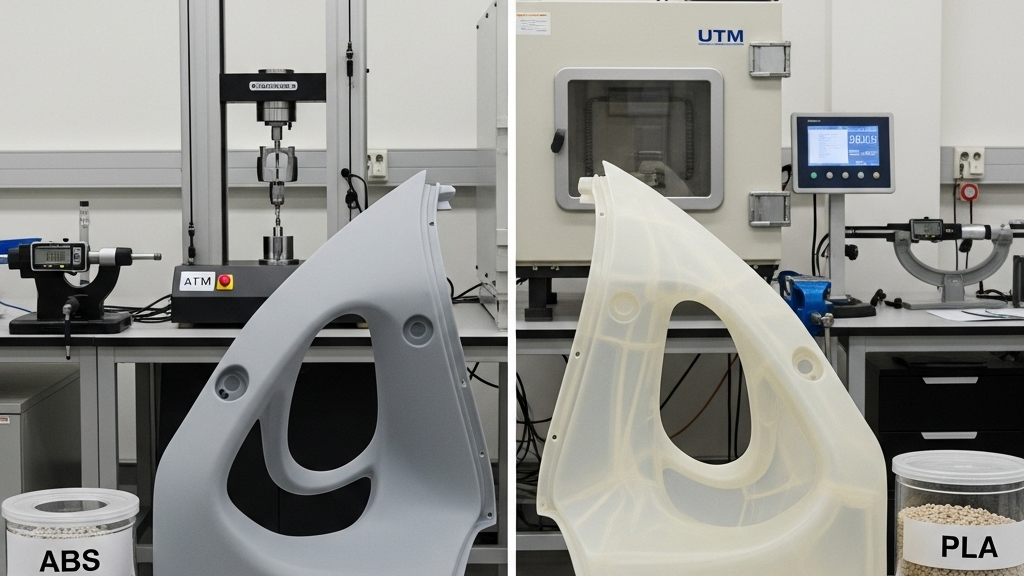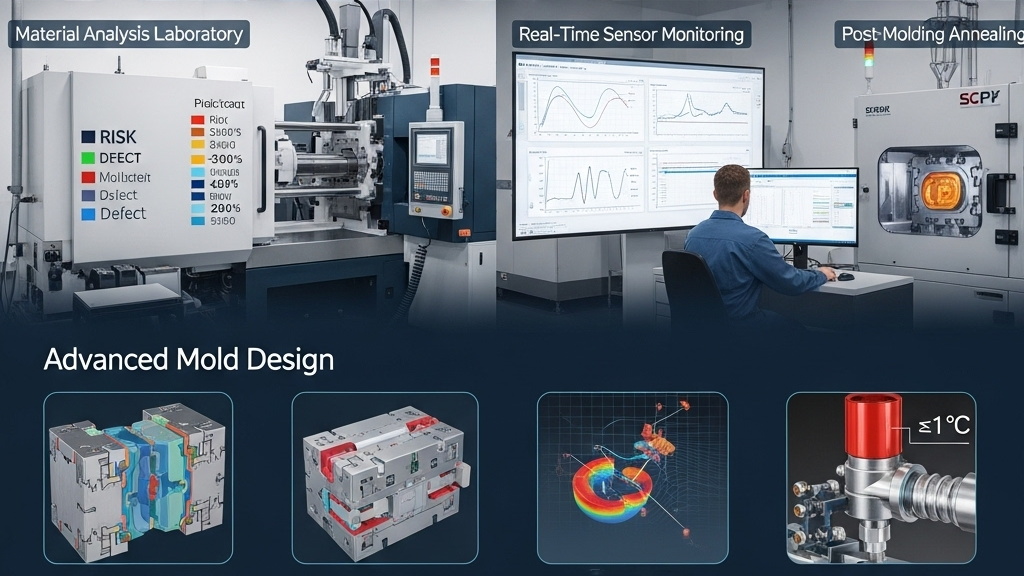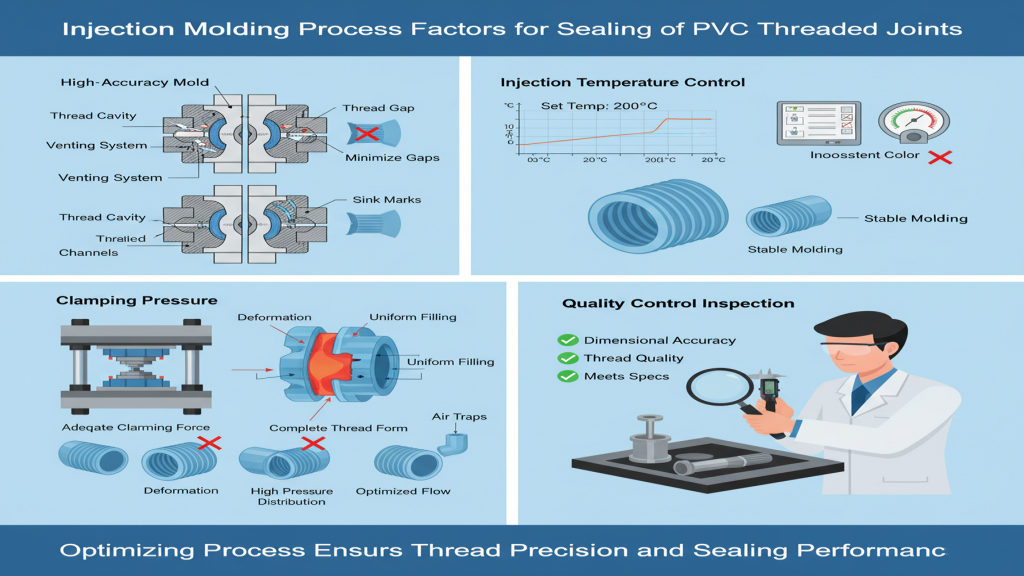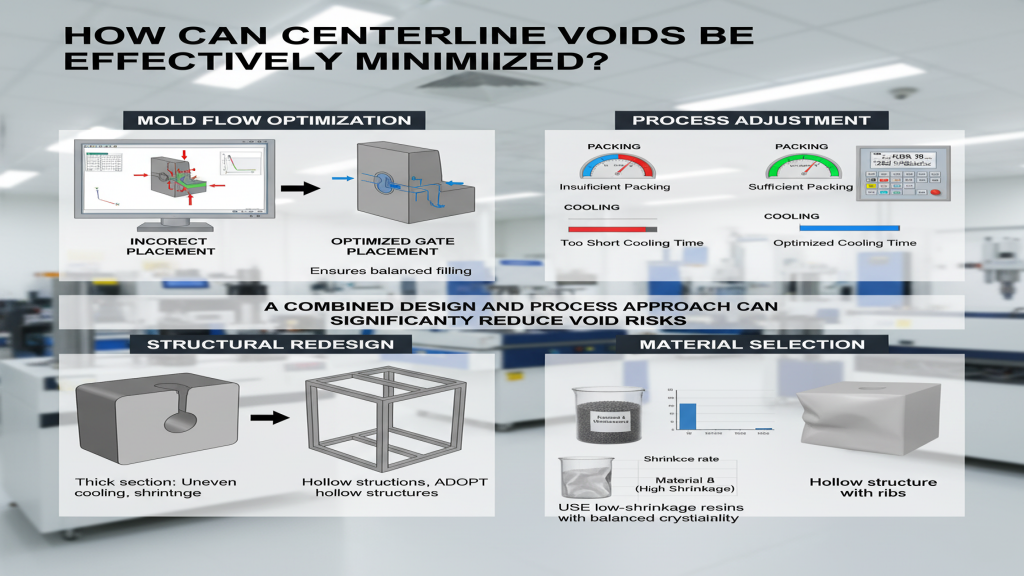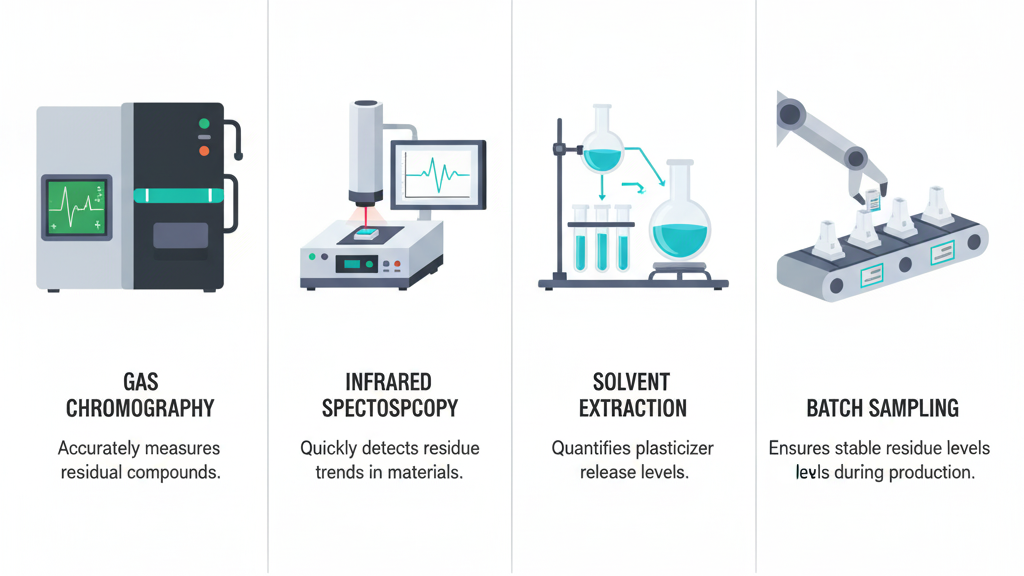
Polycarbonate (PC) is widely used due to its high strength and transparency. However, defects often occur during injection molding, affecting product quality. Understanding and addressing these defects is crucial, as it can enhance product performance and reduce production costs.
PC injection-molded parts exhibit a variety of defects with complex causes. Next, we will delve into several common defects, analyze their root causes, and provide practical solutions for each defect.
What are the common defects in polycarbonate (PC) injection-molded parts?

Polycarbonate (PC) is widely used in various fields due to its excellent physical properties. However, various defects often occur during the injection molding process, affecting product quality and service life.
- Sink Marks: Surface depressions caused by uneven material shrinkage.
- Warpage: Product deformation due to uneven cooling or internal stress.
- Cracking: Cracks caused by stress concentration or material degradation.
- Flow Marks: Surface ripples caused by poor melt flowability.
What are the causes of these defects?

From material properties to process parameters and mold design, multiple factors intertwine to influence the quality of PC injection-molded parts. Understanding these factors is essential to prevent defects at their root.
- Material Factors: The inherent properties of the material and improper handling are the primary sources of defects.
- Process Parameters: Unreasonable injection temperature, pressure, speed, cooling, and holding time lead to various defects.
- Mold Design: Flaws in feed system, cooling, demolding, and mold precision directly affect molding quality.
- Environmental Factors: Fluctuations in humidity and temperature in the production environment increase the risk of defects.
What are the effective solutions to these defects?

Faced with various defects in polycarbonate (PC) injection-molded parts, we are not helpless. By optimizing processes, improving molds, and selecting appropriate materials, we can find effective solutions to enhance product quality.
- Sink Marks: Optimize the mold and adjust process parameters to ensure uniform filling and reduce shrinkage.
- Warpage: Control cooling rates and eliminate internal stress to ensure dimensional stability.
- Cracking: Pre-treat materials and optimize mold design to reduce stress concentration and prevent cracking.
- Flow Marks: Improve the flowability of molten plastic and enhance mold design to reduce flow resistance.
Causes and countermeasures of defects in PC injection molding parts
| Defect Type | Cause | Solution |
|---|---|---|
| Sink Marks | Material shrinkage, insufficient cooling | Optimize mold cooling, increase holding pressure |
| Weld Lines | Poor melt flow convergence, low mold temperature | Increase mold temperature, optimize gate location |
| Warpage | Uneven cooling, internal stress | Uniform cooling, annealing |
| Cracking | Stress concentration, material degradation | Reduce injection pressure, material drying |
Preventing and Controlling These Defects
Preventing and controlling defects in polycarbonate (PC) injection-molded parts is a critical step in ensuring product quality and improving production efficiency.
1.Material Control: Strictly monitor the quality of raw materials to ensure they are dry and free of impurities, minimizing the potential for defects at the source.
2.Process Optimization: Carefully adjust injection molding process parameters to ensure the flowability and uniform filling of molten plastic, avoiding internal stress formation.
3.Mold Design: Reasonably design the mold's feed system, cooling, and venting systems to ensure stability during the plastic molding process.
4.Environmental Control: Stabilize the temperature and humidity of the production environment to reduce the negative impact of environmental variations on product quality.
Conclusion
Defects in PC injection-molded parts result from the combined effects of multiple factors, including materials, processes, molds, and the environment. To effectively address these issues, a comprehensive approach is essential, involving thorough optimization from the source to the entire production process.
For expert assistance in implementing for your production needs, visit our resource center or contact us. Let’s help you scale up your manufacturing with precision and efficiency!

